Revealed: The shockingly gross origins of the mysterious black balls that washed up on Australia’s most iconic beaches
Last month, some of Australia’s most iconic beaches were closed due to a plague of mysterious black balls.
While authorities initially thought these bizarre spheres were poisonous tar balls, scientists have now revealed that their origins are much more disgusting.
Researchers from the University of New South Wales say the balls are actually a nasty mixture of raw sewage, shortening, soap scum and medicine.
Chemical analysis shows that the bulbs contain traces of veterinary drugs, steroids and drugs, including THC from cannabis and even methamphetamine.
Scientists who worked on the project say these chemicals are strong indications that the balls contain a significant amount of human feces.
This suggests that Sydney’s black balls were not formed by an oil spill, as many thought, but are in fact pieces of a ‘fatberg’ commonly found in city sewers.
Associate Professor Jonathan Beves, who led the research, said: ‘Our analyzes show that the material is not natural and cannot be attributed solely to an oil spill.
“It is most similar to human-generated waste.”
Scientists have revealed the disgusting origins of the mysterious backwaters plaguing Sydney beaches (pictured)
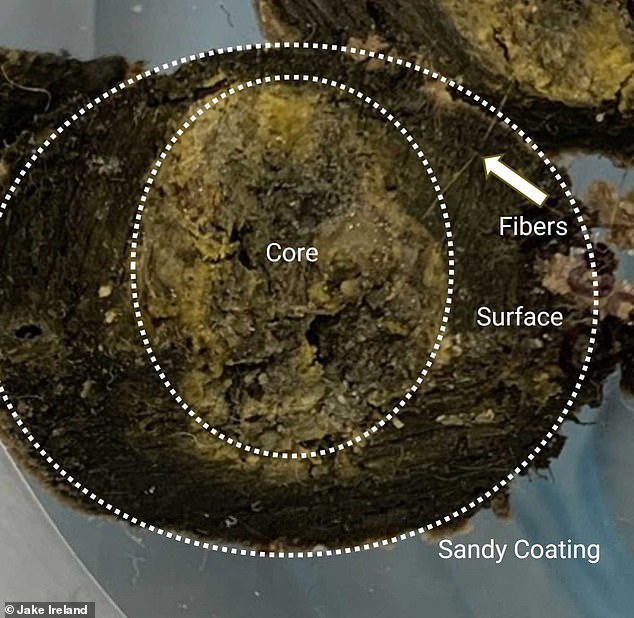
Chemical analyzes show that the balls (pictured) are likely solidified pieces of a fatberg that form when human waste mixes with oil and soap scum in the sewers.
The mystery began on October 16 when hundreds of strange orbs washed up on Coogee Beach, followed by more beaches including Clovelly and Maroubra.
Fearing they could be toxic, city authorities closed a total of eight beaches, including Bondi, and ordered a massive clean-up operation.
The balls were initially thought to be a type of tar formed when oil leaked from a ship or offshore platform mixed with cold water and debris.
Residents were warned not to touch the balls and some experts warned they could be carcinogenic.
Each ball has a crusty exterior formed by accumulated sand and minerals surrounding a soft, sticky center.
“They smell absolutely disgusting, they smell worse than anything you’ve ever smelled,” lead researcher Professor Beves told 9News.
Using a barrage of different tests, the scientists slowly managed to tease apart the chemical composition of the strange balls.
Although preliminary research showed that the balls resembled crude oil, Professor Beves explains that the reality was much more complex.
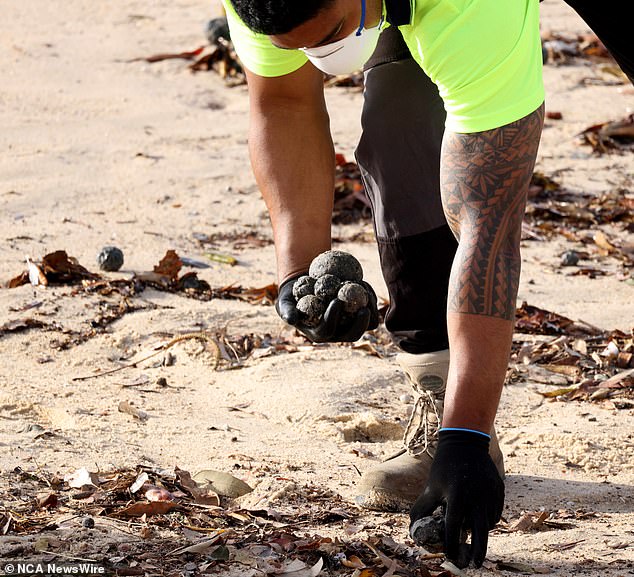
The balls first appeared on October 16, prompting authorities to close eight beaches, including Coogee (pictured) and Bondi, and order a massive clean-up operation.
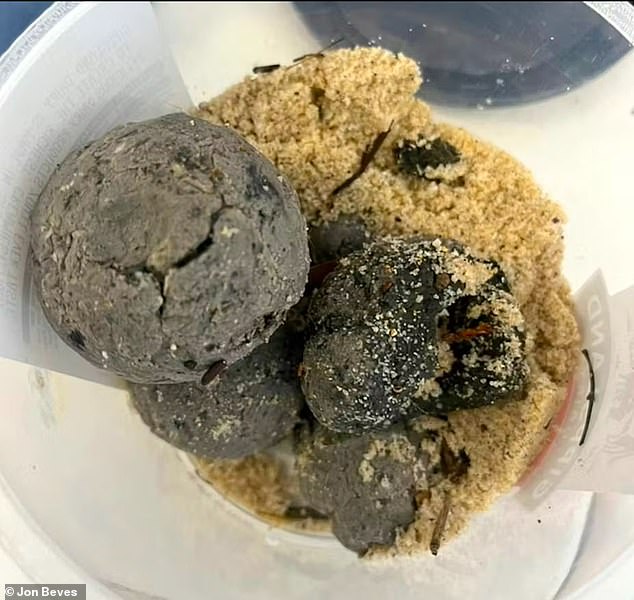
Initial tests suggested the black balls could be a form of tar ball that forms when crude oil comes into contact with cold water
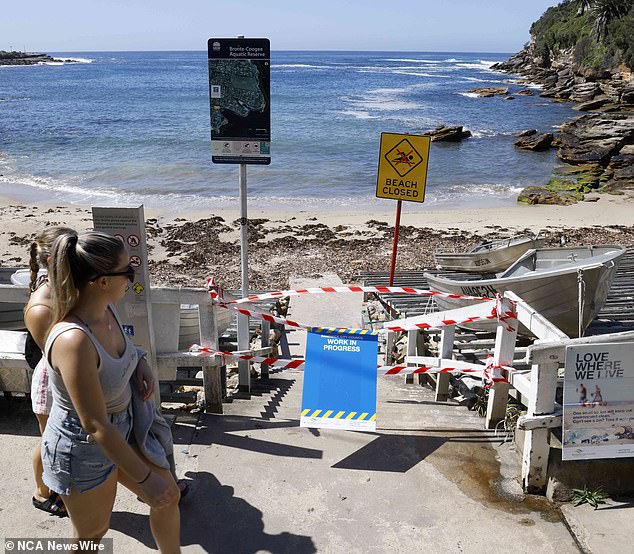
Scientists found traces of veterinary drugs, steroids and illegal drugs such as methamphetamine. This suggests that the balls contain some amount of human feces
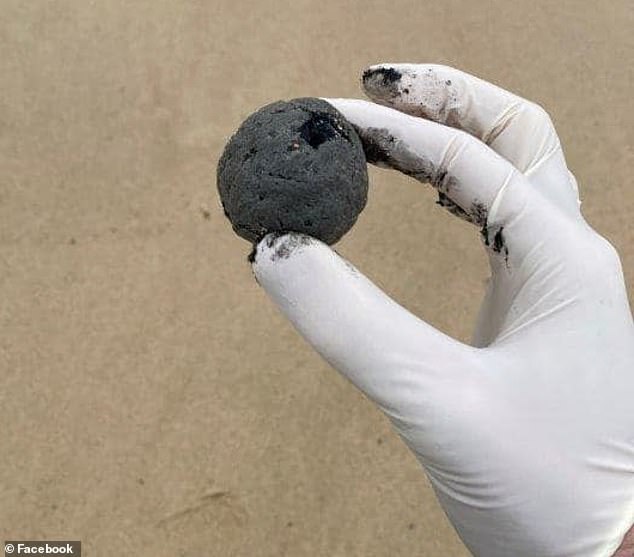
The balls are likely pieces of a fatberg that formed in the sewer when feces mixed with oil and soap scum to form a solid lump.
Most of the black goop that made up the spheres turned out to be carbon, but only 30 percent of it came from fossil fuels like oil.
The remaining 70 percent, the scientists found, was modern carbon from human sources.
Instead of being made of solidified tar, the balls were actually a sticky mixture of cooking oil and soap scum.
However, further research revealed that this modern carbon contained hundreds of different chemical traces.
Professor Beves said: ‘We found that the sticky beads contained hundreds of different components, including molecules derived from cooking oil and soap scum, PFAS chemicals, steroid compounds, antihypertensive drugs, pesticides and veterinary drugs.
‘This combination suggests a mix of substances derived from both fossil fuels and plant or animal sources.’
When Professor Beves first examined the balls using Nuclear Magnetic Resonance (NMR) tests, his team discovered that they contained some elements derived from petrolium.
However, the presence of drugs and narcotics suggested that the black balls may have had a much more disgusting origin than a leaking oil tanker.
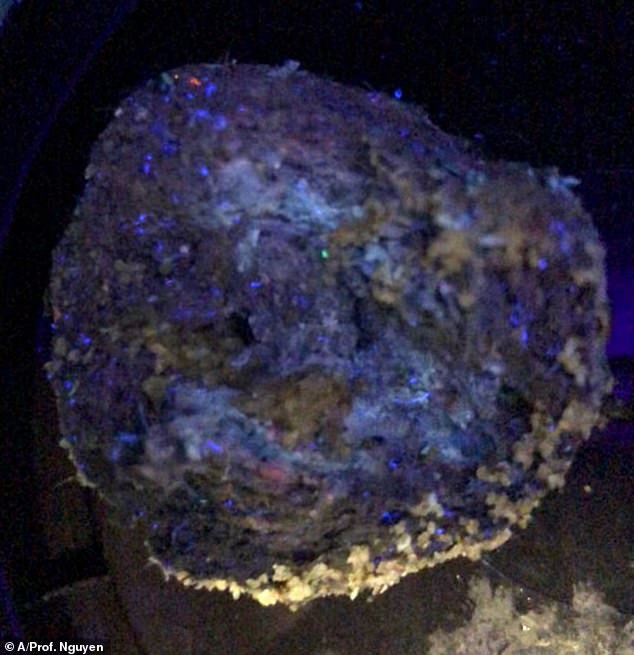
Initial tests showed that the balls glowed under UV light, indicating that organic compounds may have been mixed into the petroleum-derived oils.
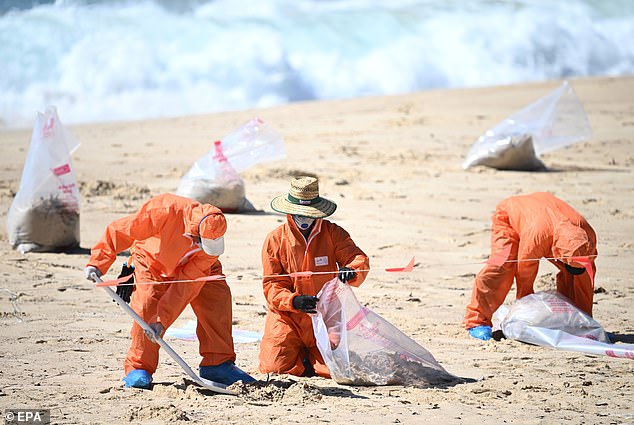
All eight affected beaches have now reopened, but the cause of the sewage leak is still unknown. Pictured: the clean-up operation at Coogee Beach
Professor William Donald, who worked on the analysis, said: ‘Detecting markers of human faecal waste – such as coprostanol – alongside recreational drugs such as THC and industrial PFAS ‘forever chemicals’ has pointed us to sewage and other sources of urban wastewater as the most consistent origin .’
When soap, grease and human waste mix in the sewage system, high calcium levels can cause these organic chemicals to clump together into insoluble masses called fatbergs.
These are usually found in the sewers of large cities and require constant efforts to break them up and unclog them.
This suggests that a sewer leak is the most likely cause of these mysterious black orbs.
However, the exact source of the contamination still remains a mystery.
To write The conversationProfessors Beves and Donald said: ‘The Black Ball incident does highlight the wider problem of pollution along Sydney’s coastline.
‘Even after all we’ve done, we can’t draw any definitive conclusions about the primary source of the blobs.
‘This uncertainty reflects the broader challenges that scientists and environmental agencies face in detecting and tackling pollution in coastal areas.’
